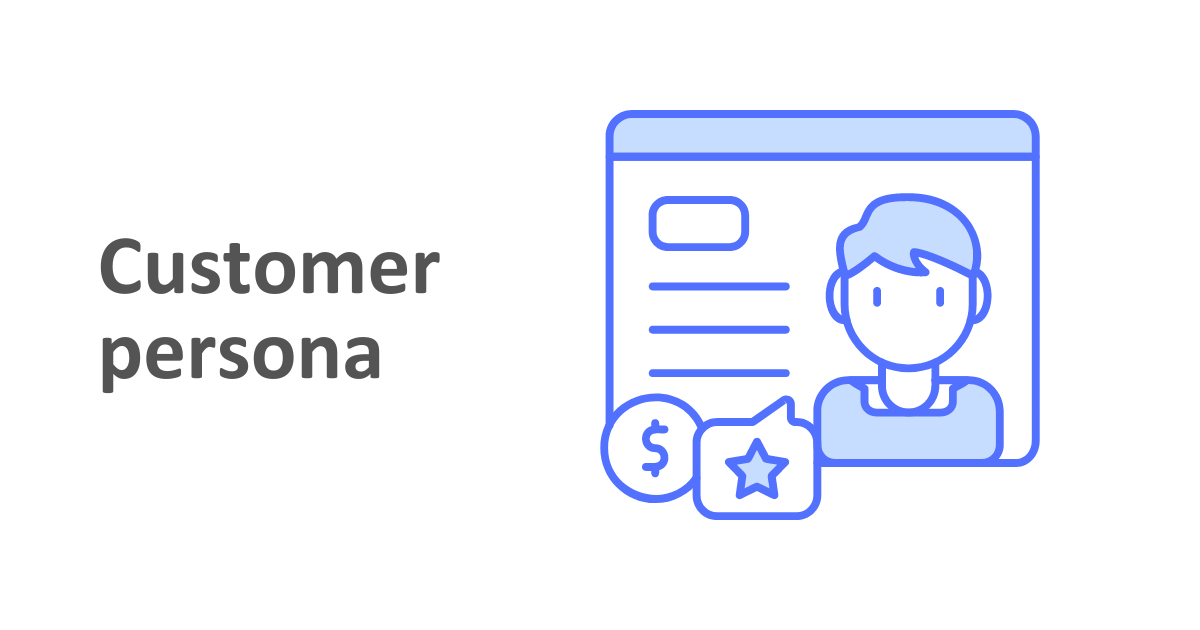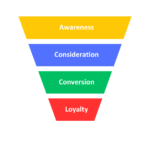Imagine yourself as a bustling store owner. You’re standing behind the counter, your shop brimming with wonderful products. Customers are milling about—some browsing leisurely, others with a specific item in mind. But how do you know what each person truly needs? How do you tailor your approach to resonate with their individual preferences?
In today’s digital landscape, this understanding is crucial. You can’t physically interact with your customers like in a traditional store. So, how can you connect with them on a deeper level? The answer lies in creating detailed customer personas.

What are Customer Personas?
Think of customer personas as a blueprint for understanding your ideal audience. They are fictional yet data-driven representations of your target customers, helping you understand their motivations, pain points, goals, and aspirations. They go beyond basic demographics like age and location. Instead, they delve into the psychology of your audience, allowing you to tailor your messaging and marketing strategies accordingly.
Example Personas:
- Meet Sarah: A 35-year-old working mom juggling a demanding career and a busy household. She’s always pressed for time and values convenience. When shopping online, Sarah seeks efficiency and reliability, relying on genuine product reviews over flashy ads.
- Meet David: A 28-year-old tech enthusiast who thrives on staying ahead of trends. David loves innovative gadgets and thoroughly researches every purchase. He’s active on social media and is loyal to brands that engage their community authentically.
- Meet Emily: A 55-year-old retiree who enjoys travel and spending time with her grandchildren. She seeks products that improve her quality of life. Emily values straightforward information and exceptional customer service.

These are just a few examples of customer personas. But you can create as many personas as needed to represent your audience.
Why Customer Personas Will Revolutionize Your Marketing
You might be wondering: why invest time in building customer personas? The truth is, that understanding your audience at a deep level can be a game-changer. Here’s how:
1. Speak Your Customer’s Language
Once you understand your customer personas, you’ll know how to communicate with them in a way that truly resonates. You’ll understand their challenges, needs, and desires. Imagine sending Sarah an email highlighting your new time-saving product or showing David an ad featuring the advanced features of your latest tech gadget. This personalized marketing will make your audience feel seen and valued, leading to higher engagement.
2. Create Laser-Focused Campaigns
Why cast a wide net when you can be precise? Customer personas allow you to create campaigns tailored to each persona’s specific needs. This targeted approach leads to better conversion rates and a higher return on investment (ROI). You’ll also allocate your budget more efficiently by knowing which platforms to use and what messaging will best engage your audience.
3. Personalize the Customer Experience
From personalized product recommendations to tailored email campaigns, customer personas allow you to customize the customer journey. Imagine Sarah receiving a recommendation for a product that will save her time, or Emily receiving a personalized thank-you note with her purchase. These small but impactful touches foster loyalty and long-term relationships with your customers.
4. Boost Team Alignment
Customer personas align your marketing, sales, and product development teams. With everyone on the same page about who your ideal customers are, your teams can collaborate more effectively. This alignment leads to better internal communication, more cohesive campaigns, and ultimately, a stronger brand.
5. Gain a Competitive Edge
By understanding your customers deeply, you can anticipate their needs and stay ahead of your competitors. You’ll be able to identify emerging trends and tailor your offerings before the competition does. Brands that have a comprehensive understanding of their customers are better positioned to innovate and lead in their industries.
How to Create Customer Personas in 6 Easy Steps
Now that you understand the value of customer personas, let’s walk through how to create them. Here’s a six-step process to develop detailed and actionable personas:
1. Gather Data
Start by gathering as much data as possible on your existing customers. Use tools like Google Analytics to track customer behavior on your website. Explore their purchasing history, demographics, and preferences. You can also analyze social media insights to see what they’re engaging with and talking about.
2. Conduct Customer Interviews
Go beyond the numbers by conducting interviews with your customers. Ask open-ended questions that reveal their pain points, goals, and buying habits. Example questions include:
- What challenges do you face when it comes to [your industry]?
- What influences your purchase decisions?
- What are your favorite brands and why?
- What are your goals and aspirations?
These conversations will provide valuable insights that raw data may not capture.
3. Identify Patterns
Once you’ve gathered enough data, look for recurring themes. What are the common pain points? How do customers make purchasing decisions? What channels do they use for research? Use tools like spreadsheets or mind maps to organize your findings and spot key patterns.
4. Craft Your Personas
Now, bring your personas to life. Give each persona a name, age, profession, and backstory. Include their motivations, challenges, and preferences. Visualizing your personas with images or illustrations can make them more tangible. Remember: personas should feel like real people.
5. Share and Implement
Once you’ve crafted your personas, share them with your team. Ensure they’re integrated into your marketing strategy. Use them to guide content creation, advertising, and product development. Regularly revisit and update your personas as your business and audience evolve.
6. Put Them to Work
Use your personas to tailor your marketing campaigns. Create specific messaging for each persona and decide on the best communication channels. For instance, you might engage Sarah through an email about convenience, while David prefers in-depth blog articles with product specs.
Common Mistakes to Avoid When Creating Customer Personas
While customer personas can be incredibly valuable, there are a few common pitfalls to avoid:
1. Relying Solely on Demographics
Don’t fall into the trap of basing personas on age, gender, or location alone. Personas should include behavior, motivations, and challenges.
2. Not Updating Personas
Your customers’ needs will change over time. Regularly update your personas to reflect new behaviors, market trends, and insights.
3. Overcomplicating the Process
Personas should be detailed but not overwhelming. Keep them clear, concise, and actionable.
Real-Life Impact of Customer Personas
Let’s revisit our bustling store owner. Armed with customer personas for Sarah, David, and Emily, they can now create personalized marketing campaigns. Sarah might receive an email about a quick checkout feature, while David engages with a detailed blog on innovative tech. Meanwhile, Emily gets a friendly customer service message, offering her a special discount for seniors.
The result? Higher engagement, better conversions, and improved customer satisfaction.
Conclusion: Why You Need Customer Personas Today
Creating customer personas is a vital step toward building a stronger, more connected relationship with your audience. When you take the time to understand your customers on a deeper level, you can create personalized, targeted marketing that resonates. It’s time to stop guessing what your audience wants and start knowing.
Remember: your customers are not just data points; they are individuals with unique needs and desires. By speaking their language, you’ll not only drive better results but also build long-lasting relationships that lead to loyal, happy customers.





